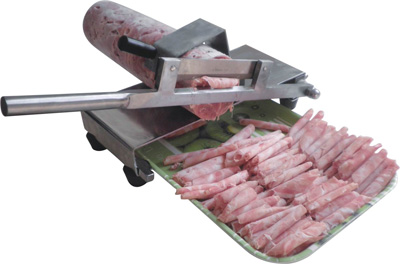
In the past decade, China's food machinery industry has undergone multiple rounds of transformation and made significant progress. However, the industry has always faced an awkward situation of being small but scattered, large but not precise, and the core technology of products is difficult to compete with developed countries.
It is reported that with the issuance of the "Three Year Action Plan for Industrial Transformation and Upgrading in Guangdong Province (2015-2017)", various regions in Guangdong have seized the opportunity. For example, Guangzhou proposed to cultivate a production capacity of 100000 sets of industrial robots and intelligent equipment per year by 2020, and more than 80% of manufacturing enterprises in the city will use industrial robots and intelligent equipment; Dongguan, known as the "world's factory", has proposed to strive to double the output value of the city's industrial robot intelligent equipment industry to 70 billion yuan by 2020. Recently, the construction of an "unmanned factory" in Dongguan has brought the "machine for human" strategy into a breakthrough stage.
"Machine replacement" not only saves labor costs for enterprises, but also encourages them to invest the saved funds in the field of improving total factor productivity, thereby promoting the transformation and innovation of production management, human resource management, information management, etc.
The demographic dividend is gradually disappearing, and various industries are launching the "machine for person" strategy in order to achieve enterprise transformation and upgrading, ensure stable production, and ensure the quality of product production. As a food machinery industry, it also faces challenges brought about by the gradual loss of demographic dividends. Faced with the gradual loss of demographic dividends, the demand for automated food machinery production lines in food processing enterprises is increasing day by day. To achieve sustainable development, food machinery enterprises need to encourage industry technological upgrades and achieve intelligent and automated production in multiple aspects. With the increasing level of automation, the lack of demographic dividends, and people's increasing attention to health issues, the food machinery industry is eager to achieve automated production. Taking the application of Tusda automatic processing solution in the food machinery industry as an example, its benefits mainly include the following points: the higher the production efficiency requirement, the better. Can reduce product costs and meet delivery deadlines. If the cold filling production line automatically goes from plastic raw materials online to beverage filling and large packaging stacking, all of them are automatically carried out in a closed workshop.
Can adapt to product updates and changes. It has high flexibility and flexibility, and the production line allows packaging size to change within a certain size range. Because the lifecycle of the product is much shorter than the service life of the equipment, changing the product and packaging will not result in replacing expensive packaging production lines.
Quickly troubleshoot common equipment malfunctions. The solution is to input it into the computer in advance, and when the device encounters common faults, it can diagnose them on its own or remotely diagnose and troubleshoot.
Equipped with automatic recognition function. On the one hand, it can automatically identify the thickness, hardness, rebound force, etc. of packaging materials, and adjust the action amplitude of the Tosda robotic arm through computer feedback to ensure no rebound. On the other hand, various products can be scanned with probes to determine the position of materials of different shapes, and then fed back to different Tosda robotic arms. It will accurately place items in the tray according to the accurate position and direction, fast and accurate, eliminating the visual and finger fatigue caused by manual operation.
The higher the level of automation, the higher the production efficiency, the less dependence on labor, and the higher the level of food safety. In this regard, food machinery enterprises should focus on strengthening technological innovation, continuously improving automation levels, responding to the needs of enterprises for human resources, saving labor costs, improving product production efficiency, and achieving professional, energy-saving, and safe food processing.